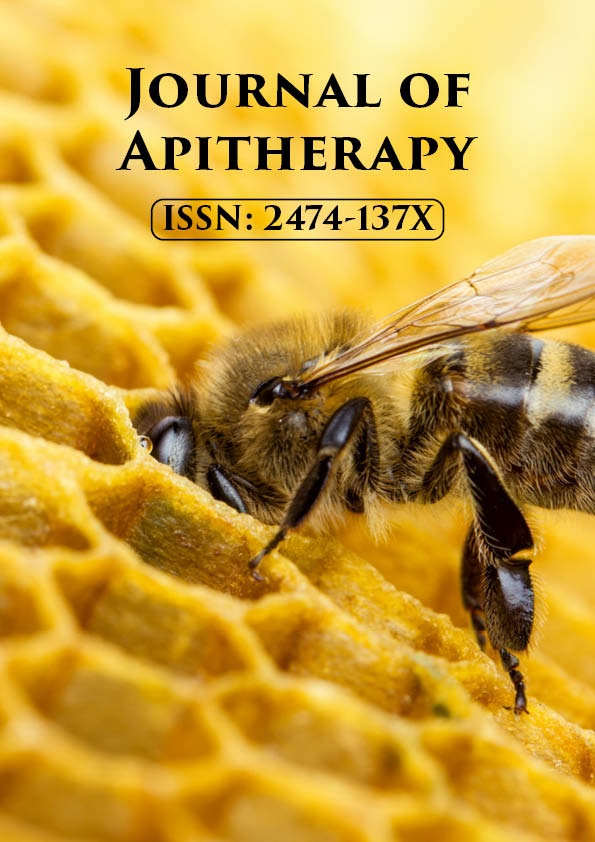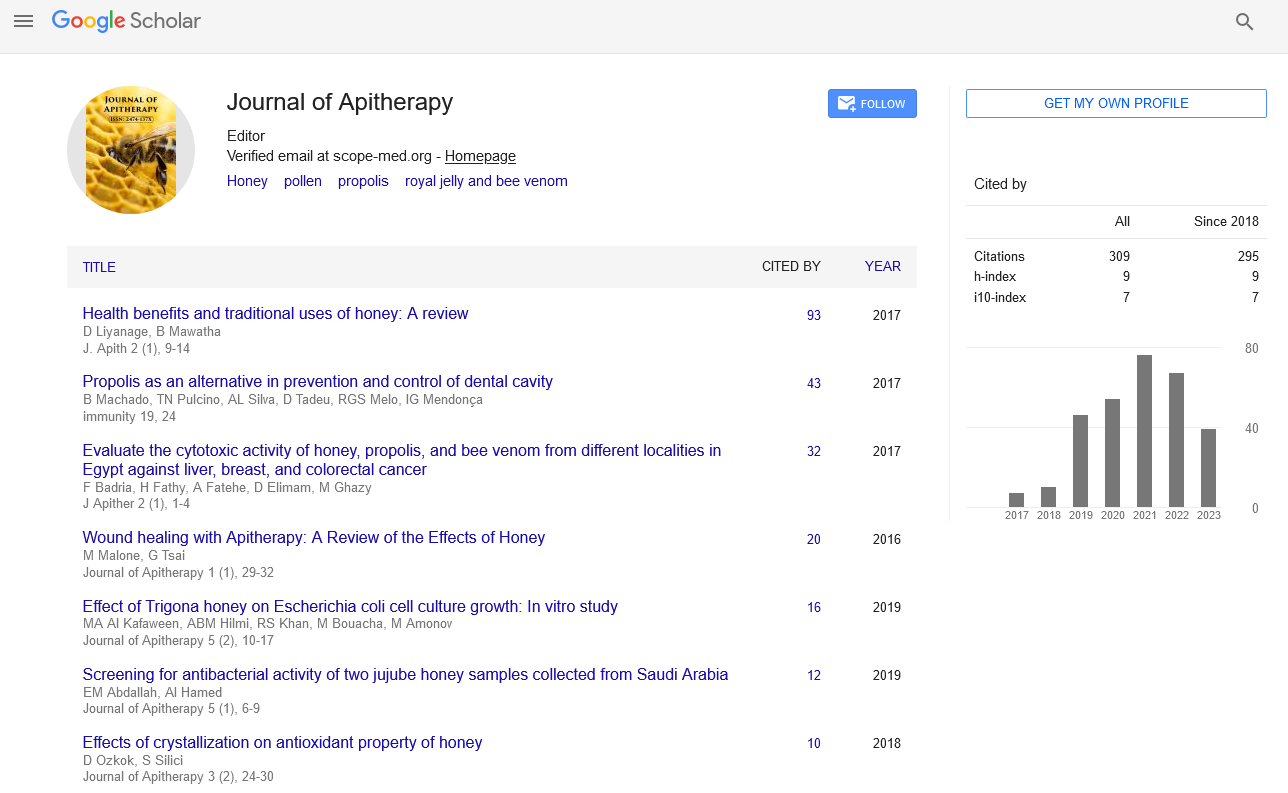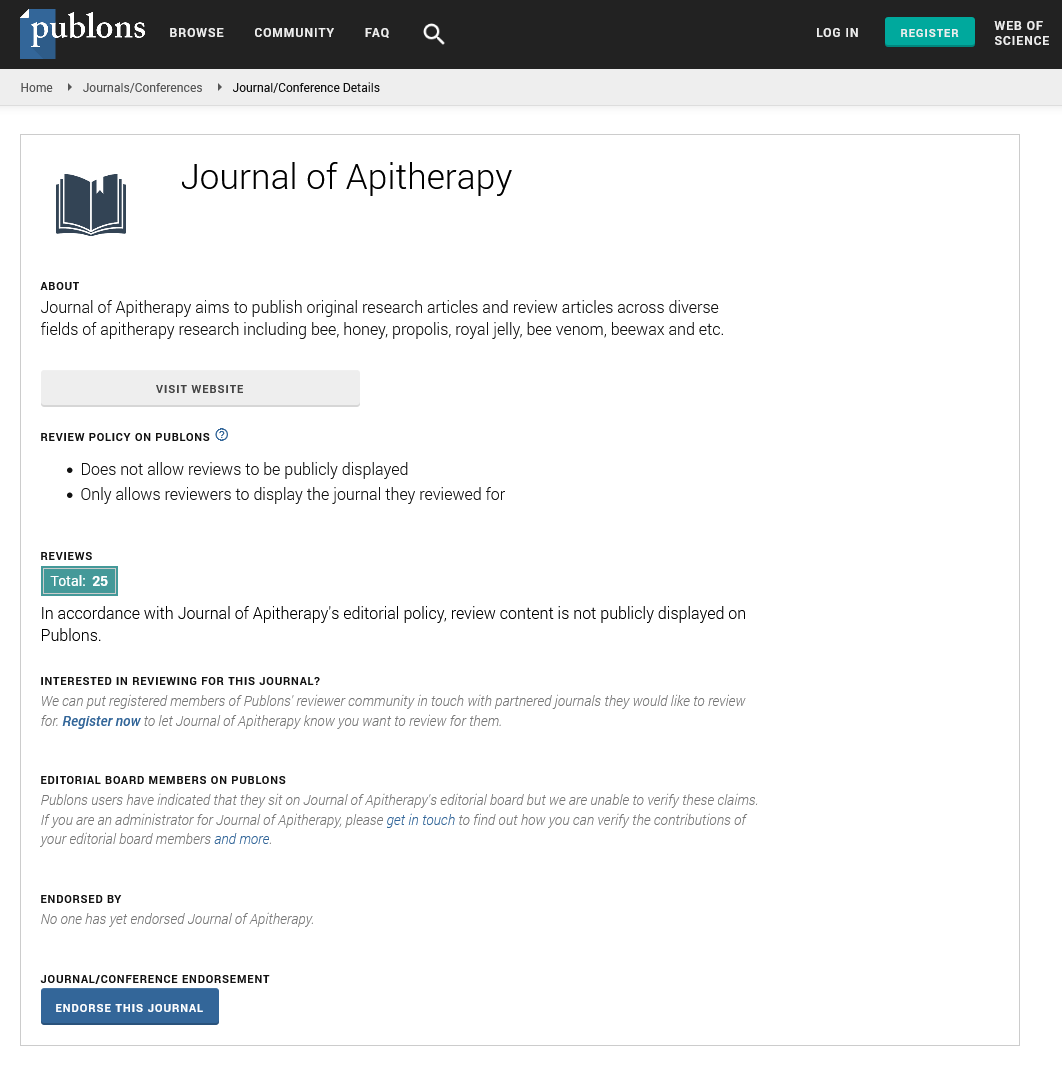Commentary - Journal of Apitherapy (2022)
Use of Honey Treating Infected Wounds
Shun Chen*Shun Chen, Department of Entomology, Kansas State University, Shanghai, China, Email: samtrepned@gmail.com
Received: 04-Feb-2022, Manuscript No. JAPITHERAPY-22-58360; Editor assigned: 07-Feb-2022, Pre QC No. JAPITHERAPY-22-58360; Reviewed: 22-Feb-2022, QC No. JAPITHERAPY-22-58360; Revised: 28-Feb-2022, Manuscript No. JAPITHERAPY-22-58360; Published: 07-Mar-2022
Description
Honey is an old therapy for treating infected wounds, and it’s becoming increasingly relevant as germ resistance to standard antibiotics grows. Incision, excision, burn, and dead-space wound models in rats were used to investigate the wound-healing efficacy of Acacia honey. Different honey formulations were employed, and rats were treated both topically and orally. Honey in both higher and lower doses had a substantial therapeutic effect. Honey is a popular natural food that has a complex composition that includes both organic and inorganic components. Natural and anthropogenic influences influence the composition of honey, which varies depending on its botanical and geographical origins. Minerals and heavy metals are tiny components of honey, yet they play an important influence in its quality. The chemical components in honey can be determined using a variety of analytical procedures. Honey has been used to treat wounds since ancient times because of its antibacterial and wound-healing properties. Honey, a carbohydrate-rich natural component, could be used in clinical settings or integrated into tissue-engineered platforms. The antibiotic’s clinical utility was severely harmed as a result of its research. Natural Plants fire two types of defences in response to herbivore attacks: direct defence and indirect defence. All plant features that alter the physiology and/or behaviour of the attackers to strengthen the resistance of host plants to insect herbivores are classified as direct defence. Indirect defence refers to any characteristic that, while not having a direct impact on the attacking herbivores, can attract natural enemies of the herbivores, reducing plant loss.
Plants create and emit a mixture of volatiles in response to herbivore-associated elicitors, which can attract predators, parasites, and other natural enemies. Fatty acid–amino acid conjugates, sulphur-containing fatty acids, cell wall fragments, peptides, esters, and enzymes are all known herbivore-associated elicitors. However, due to the rise in antibiotic resistance, there has been a greater demand for alternate therapeutic methods. Honey is one of the most popular functional foods, with evidence of its use dating back to the dawn of civilisation. Honey is used to treat a variety of ailments in Unani medicine, including wound healing, anti-inflammatory, and anti-diabetic properties. Concerns concerning plant protection products’ reproductive toxicity in honey bee reproducers are growing. Because the reproductive capacity of honey bees is currently not taken into account during the risk assessment process for plant protection product registration, it is critical to develop methodologies for assessing such possible impairments. Plants produce toxic or deterring secondary metabolites as a defence against herbivory, and they’re almost everywhere in tissues exploited by phytophagous insects. Although floral nectar is primarily used to attract and reward pollinating creatures, it may also contain harmful or deterring secondary chemicals. Surprisingly, toxic nectar is likely to be found in a wide range of plants. Concerns concerning plant protection products’ reproductive toxicity in honey bee reproducers are growing. Because the reproductive capacity of honey bees is currently not taken into account during the risk assessment procedure for plant protection product registration, it is critical to develop methodologies for evaluating such possible impairments.
Copyright: © 2022 The Authors. This is an open access article under the terms of the Creative Commons Attribution NonCommercial ShareAlike 4.0 (https://creativecommons.org/licenses/by-nc-sa/4.0/). This is an open access article distributed under the terms of the Creative Commons Attribution License, which permits unrestricted use, distribution, and reproduction in any medium, provided the original work is properly cited.







